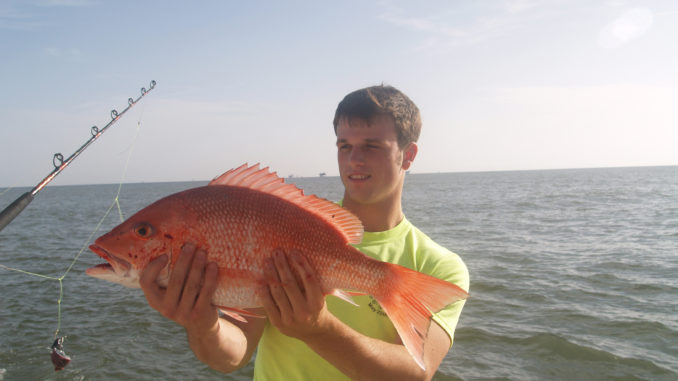
A recent economic study shows an expansion of the current South Atlantic red snapper fishing ban in federal waters from North Carolina to the Florida Atlantic coast would result in “economic battering” of the recreational fishing retail marketing in the region, the American Sportfishing Association reported yesterday (June 8).
“The current red snapper fishery closure is already having a severe impact on the recreational fishing community in the Southeast,” said Gary Zurn, Big Rock Sports Executive Vice President and ASA Saltwater Committee Chairman. “A full closure to bottom fishing would be disastrous.
In December 2009, NOAA’s National Marine Fisheries Service announced an interim rule that prohibited commercial and recreational fishing for red snapper in federal waters from North Carolina to the Atlantic coast of Florida. The six-month closure became effective in January.
However, the ban was extended on May 18 until Dec. 5 or until NMFS approves longer-term measures to end overfishing. Long-term measures are being developed in “Amendment 17A” to the Fishery Management Plan for the Snapper-Grouper Fishery.
The South Atlantic Fishery Management Council is meeting in Orlando, Fla., today to consider the Amendment 17A and the expanded fishing ban, which would include bottom fishing in waters from 98 feet to 300 feet in an area covering 10,000 square miles from North Carolina to Florida’s Atlantic coast.
The ASA reported that the survey data shows that roughly 1,300 stores selling bait and tackle will be directly affected by the proposed bottom-fishing ban. The study titled An Economic Impact Study of the Effects of Closures in the South Atlantic Snapper-Grouper Fishery on the Bait and Tackle Retail Industry was conducted by Georgetown Economic Services (GES), Washington, D.C., and commissioned by the ASA and Big Rock Sports.
These affected businesses would lose an estimated $78 million in sales in the first year of the ban alone. This equates to an average loss of $60,000 in sales per store.
In addition, the survey found that 578 jobs would be affected.
NOAA said in its December 2009 red snapper ruling that it did not have the economic impact information on tackle shops and other recreational fishing-dependent business. Big Rock Sports and ASA teamed to gather the necessary economic impact data for consideration.
“The current federal fisheries rebuilding track defaults to the most extreme measures possible without complete enough or timely enough information on the stock itself or the human impacts from fishing bans,” Zurn said.
The National Marine Fisheries Service and regional fishery management councils are obligated under the Magnuson-Stevens Fishery Conservation and Management Act to consider economic impacts when developing fishery management decisions.
“A new red snapper stock assessment will be presented to the South Atlantic Fishery Council in December. Why not wait for the results of that study before taking such extreme and potentially economically devastating action?” said ASA President and CEO Mike Nussman. “We know the red snapper fishery in this region needs rebuilding, and anglers and the sportfishing industry want the healthiest possible fishery. The council should use the most up-to-date and accurate fishery data possible including the socio-economic impacts, to inform its decision.”
ASA’s comment letter on the proposed bottom fishing closure is available on www.keepamericafishing.org/documents/17aDEISComments.pdf.



Be the first to comment